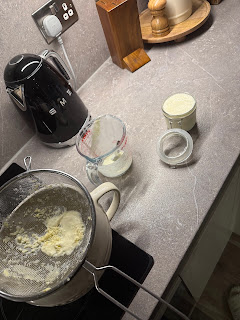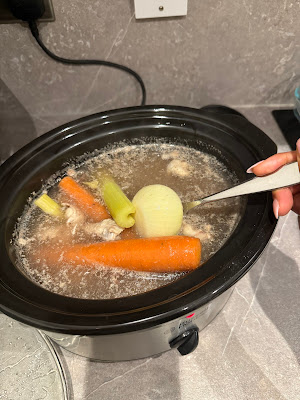What is Endometriosis?
Endometriosis is a condition where tissue similar to the lining of the uterus grows outside the uterus. It can cause pelvic pain, painful periods, and infertility.
Living with endometriosis is an ongoing challenge, one that requires more than just dealing with the pain—it’s about taking care of my whole body. Over time, I’ve realised that a combination of rest, pain relief, and a holistic approach has made a significant difference in how I manage my symptoms. While no two experiences with endometriosis are the same, I hope sharing what works for me might help someone else navigate their journey.
1. Prioritising Rest and Listening to My Body
One of the biggest lessons I’ve learned is that pushing through the pain only makes things worse. If I feel a flare-up coming on or my body feels exhausted, I take it as a sign to slow down. Rest days, naps, and simply lying down with a heating pad are essential for me. I’ve also had to learn to say no to plans when I know my body needs a break—something that took time but has made a huge difference.
2. Heat Therapy: My Go-To Comfort
3. Finding the Right Pain Relief
Painkillers can be hit or miss with endometriosis, so I’ve experimented with different options. At the moment, I take paracetamol, ibuprofen and codeine on my painful days.
I’ve also explored natural alternatives likeIt’s worth speaking to a doctor about different pain management strategies because what works for one person might not work for another.
4. Movement—But on My Terms
Exercise is a tricky one because high-impact workouts can make my pain worse. Instead, I focus on gentle movements, like yoga, stretching, and walking on my walking pad. On bad pain days, I stick to simple stretches or breathing exercises, which help release tension without straining my body.
5. Dietary Changes That Help
Food can be a trigger for my conditions, so I’ve learned to pay attention to what makes my symptoms worse. Reducing inflammatory foods like dairy, processed sugar, and caffeine has helped, and I try to include more anti-inflammatory foods like leafy greens, salmon, and ginger. It’s not about being perfect, but small changes have made a noticeable difference. I have been following my diet recipes from this book; The 4-week Endometriosis Diet Plan contains so many healing & anti-inflammatory recipes for breakfast, lunch, dinner and dessert. I would suggest following some of these diet plans, especially if you suffer from gynaecological issues like Endometriosis, PCOS, fibroids and PMS. The book also gives you suggestions on the best ways of storing your food, e.g. storing it in glass containers instead of plastic lunch boxes. Use wooden utensils & chopping board instead of silicone or plastic spatulas.
6. The Supplements That Help Me
I’ve found that certain supplements help support my body and reduce inflammation.
Magnesium Glycinate is a must for me—it helps with muscle relaxation, eases the severity of my cramps, and also helps aid sleep because I find I struggle with insomnia.
I also take these supplements:
- Omega-3 supplements have anti-inflammatory properties, which help reduce oxidative stress and help promote healthy hormone function with estrogen and progesterone, which is great for fertility.
- NAC (n-acetyl- cysteine) - Scientific research has shown that NAC improves endometriosis-related pain, e.g. pelvic pain and inflammation and the size of cysts. Improve fertility in both women and men.
- Evening primrose - promotes and maintains hormonal balance, aids PMS and increases cervical mucus production.
- Vitamin D3 - supports hormone regulation & reducing inflammation
- Ashwagandha reduces stress and anxiety, balances hormones, and improves chances of fertility
Of course, everyone’s body is different, so it’s always best to consult a healthcare professional before starting new supplements. I would also suggest reading through each supplement so you can understand the benefits for your own knowledge. This is something I did before buying them.
7. Being Mindful of Skincare and Hair Products
Something I’ve become increasingly aware of is how everyday products can affect hormonal balance. Many conventional skincare and hair products contain endocrine disruptors—chemicals that can interfere with hormones and potentially worsen endometriosis symptoms. I try my best not always to opt for safer, non-toxic beauty skincare products, avoiding those with parabens, phthalates, and synthetic fragrances. I check my cosmetic products against this website, EWG.
8. Why I Stopped Using Relaxer Hair Products
Another big change I made was stopping the use of relaxer hair products. Studies have shown a link between chemical hair relaxers and an increased risk of gynaecological issues, including worsening endometriosis symptoms. Given my condition, I decided it wasn’t worth the risk. Since stopping, I’ve noticed a positive change—not just in my hair health but in how I feel overall. If you are interested, check out this link and make your own informed decision.
9. Managing Stress and Prioritising Mental Health
Stress makes everything worse, including endometriosis pain. I try to manage it through journaling, mindfulness, and giving myself permission to rest without guilt. Therapy and following support groups & individuals who have suffered from the conditions are helpful as you can connect with others suffering from the conditions. These are a few accounts that I follow and have seen others interacting with on social media;
@endometriosis.uk
@the_endo_ space
@endometriosischlo
@melissawardrobe
@pcos.weightloss
@thepcosmentor
For my Fibroid sufferers
@fibroidqueen
Making sure to get 7-8 hours of sleep is also a must for reducing inflammation, stress and balancing hormones, which are all the factors that affect most gynaecological issues in women.
10. Seeking Medical Support and Exploring Options
Endometriosis isn’t just about pain relief—it’s about finding long-term management options. Whether it’s discussing hormone treatments, surgery, or alternative therapies with a specialist, I believe in staying informed and advocating for myself in medical settings. It can be frustrating at times, but finding a doctor who listens and takes my pain seriously has made a huge difference.
Final Thoughts
Managing endometriosis pain is an ongoing process, and what works for me now might change in the future. Some days are harder than others, but I’ve learned to be kinder to myself, listen to my body, and focus on what helps me feel my best. If you’re struggling with endometriosis, know that you’re not alone—your pain is real, and you deserve support and relief.
Do you have any go-to methods for managing endometriosis pain? Let’s share and support each other in the comments.













